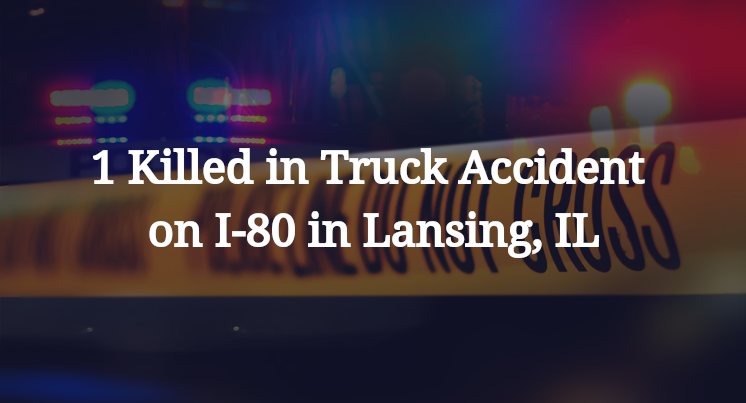1 Killed in Truck Accident on I-80 in Lansing, IL
Cook County, IL — June 8, 2025, one person was killed in a truck accident at about 5:15 a.m. on westbound Interstate 80 near Wentworth Avenue.
Authorities said a semi-truck crashed into a BMW that was disabled in a traffic lane after colliding with a Kia Forte.

The BMW driver, whose name has not been made public yet, died after being transported to a nearby hospital, according to authorities.
The other two drivers were not injured, authorities said.
Authorities have not released any additional information about the Cook County crash at this time. The accident is still under investigation.
Commentary
When a fatal crash involves a disabled vehicle struck by a semi-truck, people naturally want to know who’s responsible. But in a situation like this one, where the BMW was already disabled after a prior crash, the question becomes even more urgent: Was this death preventable? And if so, by whom?
We know the BMW was stopped in a live lane of traffic on Interstate 80, after colliding with a Kia Forte. Then a semi-truck struck it. What’s not yet clear is how much time passed between the first crash and the second, and what actions, if any, were taken to prevent further danger in that window.
Did anyone call 911 after the first crash? Were hazard lights on? Was the disabled BMW visible from a distance? Those details matter, because in highway crashes, minutes, or even seconds, can mean the difference between life and death.
But even more important is understanding why the semi-truck hit the BMW. Depending on visibility, speed, and the truck driver’s awareness, there are very different possibilities. For example:
- Was the truck driver distracted or fatigued?
- Did they have enough time to react and avoid the vehicle?
- Was traffic unusually heavy or light at that hour?
- Did weather or lighting conditions reduce visibility?
These aren’t idle questions. They’re central to establishing accountability. And the answers won’t be found in witness statements alone. Investigators will need to pull the truck’s black box (ECM) data, review any dash cam or in-cab camera footage and check cell phone records to know what the driver saw, or should have seen.
In my experience, cases like this don’t always boil down to a single driver’s mistake. Sometimes the trucking company shares the blame because they cut corners in hiring or failed to properly train their drivers for emergency response. I’ve seen companies hire drivers with spotty records or inadequate training, send them out at odd hours with little support, and then act shocked when a crash happens.
That’s why it’s essential not just to look at what the driver did, but also who put that driver on the road and whether they were equipped to handle situations like this one.
Key Takeaways
- The BMW was disabled in a traffic lane after an earlier collision, raising questions about what steps were taken to prevent further danger.
- Investigators must examine the semi-truck driver’s behavior using ECM data, in-cab video and cell phone records to understand why the crash occurred.
- Timing between the first and second collisions is crucial; was the truck driver given a chance to avoid the crash?
- Trucking company hiring and training practices should be scrutinized to determine whether this crash was truly unavoidable.
- Full accountability requires investigating both the immediate actions at the scene and the upstream decisions that put drivers on the road.

“These are essential reads for anyone dealing with the aftermath of a truck wreck”– Attorney Cory Carlson